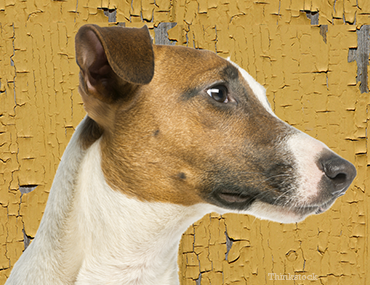
Nowadays — thanks to U.S. government regulations to remove lead from house paint in 1978 — we veterinarians see less and less lead poisoning. However, dogs and cats can still be exposed to lead by way of other sources, which results in lead poisoning when eaten. Sources of lead include the following:
- Old paint chips (exposed during construction or home remodeling)
- Fishing sinkers
- Golf balls
- Certain plumbing or construction materials (e.g., putty, lead pipes, solder, etc.)
- Shotgun pellets
- Batteries
- Children’s toys
Symptoms of lead poisoning
When accidentally ingested, lead causes chronic signs — primarily of the gastrointestinal tract (GIT) and central nervous system (CNS). Clinical signs include the following:

- Inappetance
- Anorexia
- Vomiting
- A painful abdomen
- Constipation
- Diarrhea
- Seizures
- Head pressing
- Walking drunk
- Tremors
- Acting blind
- Lethargy
If your dog or cat shows any of these signs, an immediate trip to the veterinarian is warranted. If you suspect your pet may have ingested something metallic or potentially poisonous, notify your veterinarian immediately. When in doubt, a simple blood test and x-ray can be done at your veterinarian's clinic. A lead level will measure how much lead is in the blood. Anything above 0.25 ppm (or 25 mcg/dl) is considered to be consistent with lead poisoning. Likewise, an x-ray can reveal the presence of a metallic foreign body somewhere in the body (e.g., in the stomach after being swallowed, etc.). A complete blood count (often called a CBC) can be done to look at the presence of white and red blood cells. With lead poisoning, an anemia may be seen, along with the presence of abnormal red blood cells (called nucleated red blood cells). There may also be white blood cell changes called basophilic stippling, which is classic for lead poisoning.
Treatment of lead poisoning
Treatment includes removing the source of lead, if possible. If recently ingested and still in the stomach, vomiting can be induced. Your veterinarian does not need to administer any activated charcoal (e.g., a black powder that normally binds to poisons), as it doesn’t work or bind to metals. If the lead is stuck in the intestines, surgery may be warranted to remove the source of lead poisoning. Additional treatment also includes the following:
- Intravenous (IV) fluids
- Anti-vomiting medication
- Antacids (e.g., milk of magnesia or aluminum hydroxide both of which bind up the metal to a degree)
- Anti-seizure medication (e.g., drugs like phenobarbital, keppra, or diazepam to stop the seizures)
- Muscle relaxants (e.g., methocarbamol)
- Drugs to specifically chelate (or bind) the metal from the body (e.g., succimer [dimercaptosuccinic acid], calcium EDTA, etc.].
However, there are risks with chelation including worsening of exposure and causing acute kidney injury, and it should be done carefully to protect the sick, poisoned patient.
If your dog or cat was shot with shotgun pellets, fear not. Aside from the injury of the pellets themselves, when the pellets lodge in the muscles or tissue, they typically do not result in lead poisoning. However, if your dog eats the shotgun pellets, this can definitely result in poisoning. That’s because lead leads out of acidic environments like the stomach, but remains pretty inert when present in the tissue.
Remember that children can also be poisoned by lead easily. The safest thing you can do is to avoid the use of anything containing lead in your house. This will help minimize the dangers of lead poisoning to all in the household!
If you have any questions or concerns, you should always visit or call your veterinarian -- they are your best resource to ensure the health and well-being of your pets.
